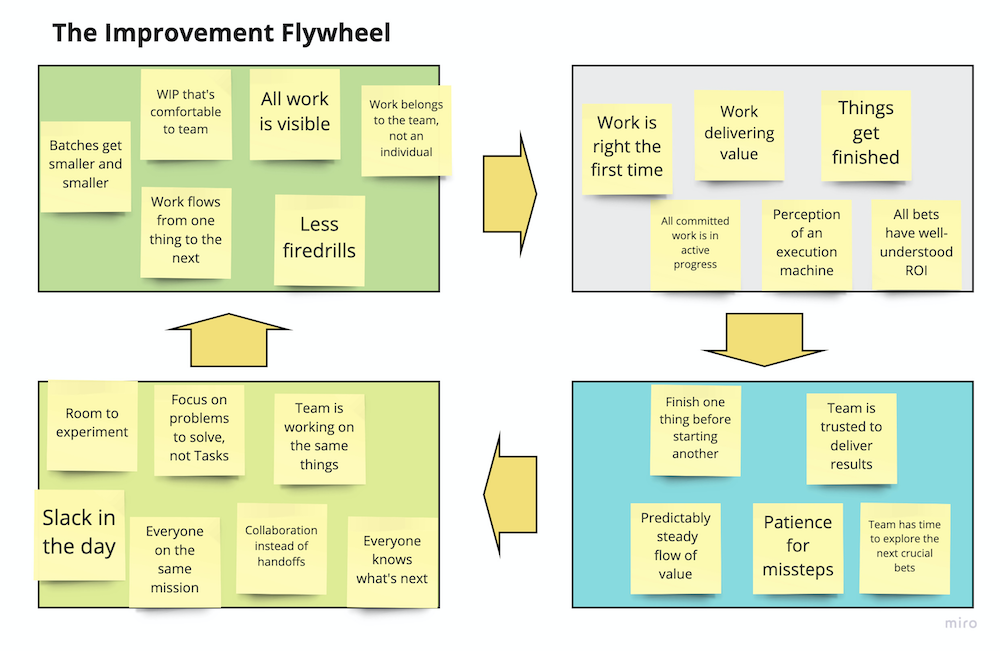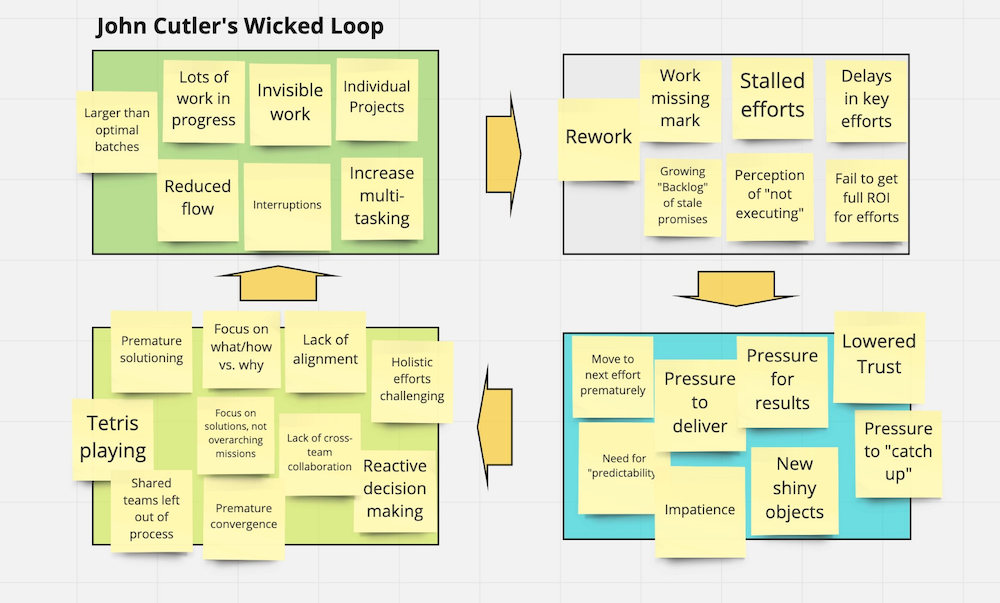Management & Leadership
The Improvement Flywheel
29 Apr 2020

A few weeks ago on Twitter, John Cutler posted what he called "the wicked loop" of product development problems.
A team doesn’t execute well, which leads to pressures to deliver things faster. Those pressures come from both inside and outside the team.
In an attempt to deliver value and relieve this pressure, the team becomes reactionary to requests, trying to do more at once, and starts paying more attention to their output than what outcomes they want. They see small holes in their schedule and try and fill those with extra work.
The result is high work in progress, with everyone doing something slightly different. What used to be seen as teamwork starts becoming an interruption, and everyone spends half the day is doing things that aren’t known to the rest of the team. And because everything is depending on everything else, shipping gets harder and batch sizes increase.
The list of missed promises grows, less gets delivered, and because the team isn’t executing well, pressures increase.
This feedback loop drives the team to become worse, not better.
But what John calls a Wicked Loop is also an incredible flywheel for improvement. Set it in motion and things will get better faster than you can imagine. The same things that cause a cascade of poor performance can also cause a cascade of improvements in the other direction.
Pick some quick wins and ship those fast. This starts gaining trust within the team and outside it that the team is capable of building quickly.
Use this trust to go back over the outstanding requests and reset expectations. Start telling customers and internal stakeholders, "not now, ask again later." This reduces the pressure on the team and slows the tide of reacting to the loudest customer. The team can now align around some larger goals instead of jumping when a wheel squeaks.
Because you’re not reacting, you’re not trying to jam lots of things into the schedule, so your work in progress drops. You make all the Work in Progress visible and discuss with the team what’s causing that and how to do less at once. By doing less at once, you experience less context switching and you start working as a team again instead of a collection of individuals. Working as a whole team reduces handoffs and improves flow.
Your better flow means that your main efforts aren’t delayed any longer, that the team starts gaining a reputation for executing well.
You’ve built an Improvement Flywheel. (Click image for full size)
You’ll fail at this if you try and change everything at once. You have to do it incrementally, especially where trust from outside the team is concerned. Pick off one thing from each of the four boxes and aim at that. You’ll find the rest starts falling into place.
